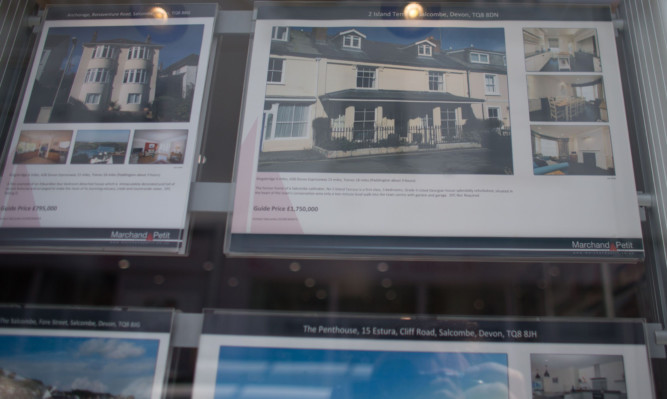Home owners are starting to put their properties on the market, with a large number of towns and cities seeing an increase in new listings in the past month, according to a study.
The number of UK owners taking steps to sell has increased by 7.1% in the past month compared to the previous month, and more than two thirds (67%) of major towns and cities have seen a rise in the number of new properties being marketed in the same period.
Online estate agent HouseSimple.com has compiled a Property Supply Index looking at the number of new properties listed every week on the property portal Rightmove, in more than 100 major towns and cities across the UK and all the London boroughs.
The figures also reveal a distinct north/south divide, with owners in the north of England and Scotland appearing to be more active in June and July in marketing their properties.
Nine out of 15 of the new property listings risers are in the north of England or Scotland, while four towns or cities in the Midlands also feature in the list.
Although the Wiltshire town of Swindon, in south-west England, has seen the biggest rise (47.3%) in new property listings in the past month, Oxford (17.5%) is the only other city in the south to feature in the list of biggest risers.
Winchester, in south east England, has seen new listings fall dramatically by 17.9% in the past month, while Hull and Doncaster in the Yorkshire & the Humber region, have seen them fall by 13.7% and 12.5% respectively.
The London property market has slowed in recent months. However, the figures show that the capital has seen an 8.1% increase in new properties being listed in the past month compared to the previous month. More than three quarters (78.1%) of London boroughs have seen an increase in new properties being marketed in the past month.
The biggest rises in new property listings in the capital have been in the boroughs of Bexley (30.6%), City and Westminster (29.5%), Islington (28.8%) and Southwark (27.1%), while the biggest fallers have been Bromley (11.2%), Kingston upon Thames (6.6%) and Havering (4.4%).
Alex Gosling, chief executive of HouseSimple.com said: “A stampede of sellers coming to market was expected after the General Election result, but that stampede never materialized.
“In fact, for the first few weeks there appeared to be a fair amount of caution and reluctance amongst sellers to market. This may have been a case of waiting to see if property prices might start to rise rapidly with the confidence generated by a stable, majority government. Now it appears sellers have waited long enough, and we’re starting to see some movement.
“New stock levels are still quite low, but it will be reassuring for the market to see that two thirds of UK towns and cities have seen stock levels rise in the past month.
“The market still needs more stock to temper house price growth. One of the reasons why prices haven’t cooled, and are seemingly on a relentless upwards trajectory, has been a lack of new properties coming on to the market, especially in London. Hopefully, we’re going to start seeing a rebalancing of supply and demand.”
Biggest percentage rises in new listings in the past month as against the previous month: Swindon 47.3; Liverpool, Leicester 30.4; Lancaster 24.3; Sunderland 22; Halifax 21.5; Coventry 21.1; Hereford 19; Lincoln 17.6; Oxford, Dundee 17.5; Edinburgh, Blackpool 17.2; Hartlepool 17.1; Bolton 16.3.
Biggest percentage falls in new listings in the past month as against the previous month: Winchester 17.9; Hull 13.7; Doncaster 12.5; Cambridge 8.7; Nottingham 8.1; Torquay 7.6; Grimsby 6.2; Norwich 5.8; Glasgow 5.7.
